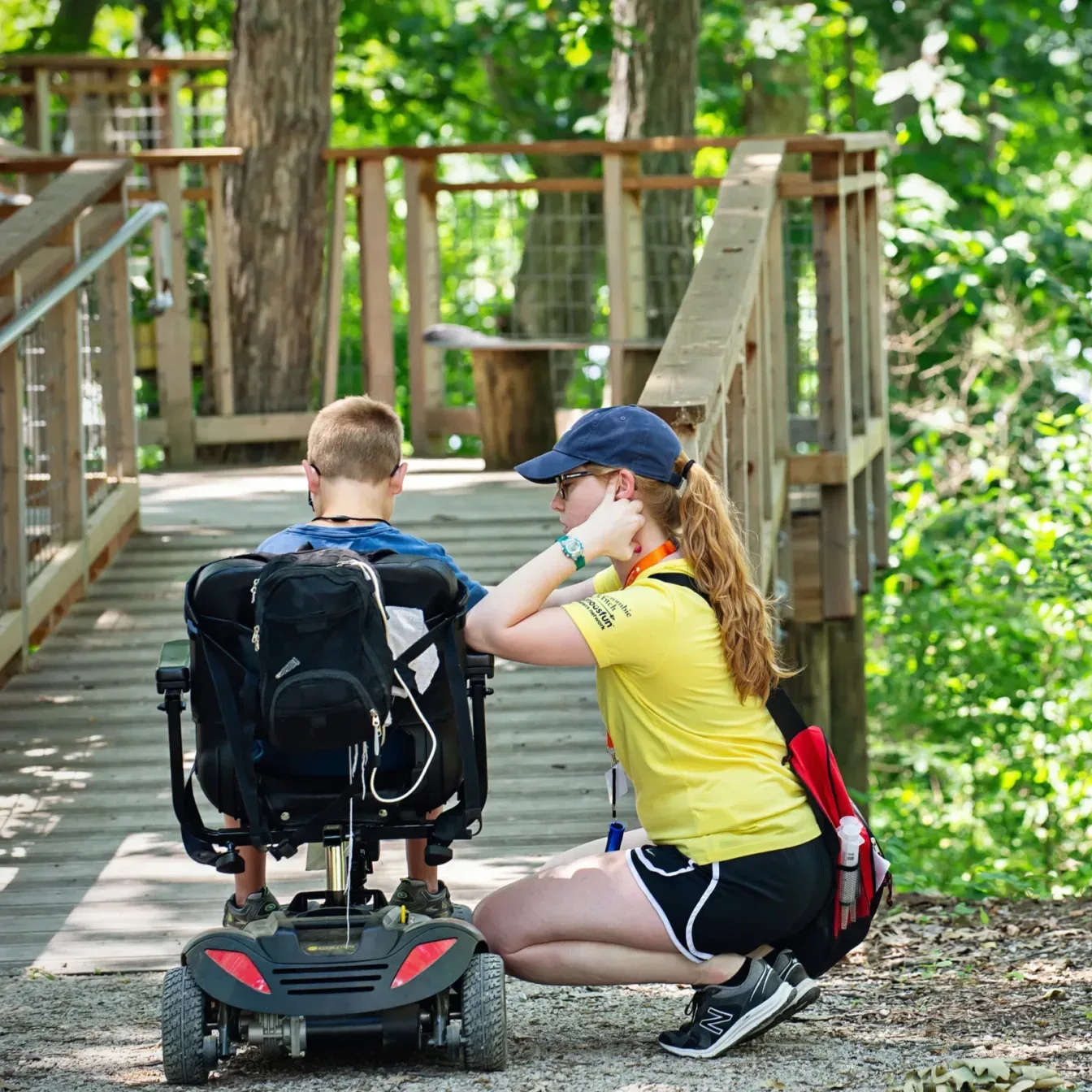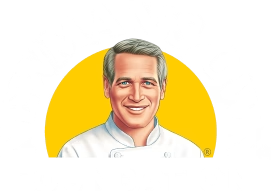I am a nutrition professional who can’t cut my own vegetables.
Living with cerebral palsy, I navigate the world with adaptations that most people never consider. While I can analyze data, develop programs, and advise on policies, the fine motor control required to safely wield a knife remains beyond my physical capabilities.
Children with disabilities face real adversity, from physical barriers to social exclusion to programs that weren’t designed with us in mind. But this adversity doesn’t have to define childhood. At Newman’s Own Foundation, our mission is to nourish and transform the lives of children who face adversity. We believe that when we’re intentional about creating positive experiences for children with disabilities, we create space for all kids to simply enjoy being kids.
As we celebrate Disability Pride Month, this intentionality matters more than ever. True inclusion isn’t just about accommodation. It’s about designing experiences from the ground up that welcome everyone. We are lucky to be working with grantee partners that are leading the way in accessibility and fun!
SeriousFun Children’s Network
SeriousFun Children’s Network, a Newman’s Own Foundation anchor grantee partner, is celebrating the spaces that allow all kids access to nature, no matter their illness or condition. SeriousFun supports and amplifies the impact of 30+ individual camps and programs to affect positive change in the lives of children with serious medical conditions and their families. At their camps, those spaces are everywhere: adaptive boat launches, wheelchair-accessible zip lines, allergy-friendly dining halls, and even accessible treehouses! Paul Newman was the force behind the first accessible treehouse at The Hole in the Wall Gang Camp in Connecticut. Since then, SeriousFun camps across the world have also created treehouses so kids can have accessible adventures in nature.
North Star Reach is home to a treehouse that is, quite literally, camper approved! It was funded by Dance Marathon, a student-run non-profit at the University of Michigan and designed by a local architect with camper input. Campers like Dominic got to give it a trial run and share their feedback with camp staff to ensure the space was kid-friendly from the ground up. With a nearly 1,800 square-foot deck, it’s the largest accessible treehouse ever built by the Treehouse Guys of the DIY Network.

Photo courtesy of Green Bronx Machine.
Green Bronx Machine
Green Bronx Machine, A Newman’s Own Foundation grantee partner since 2016, is a leader in making nutrition education programs accessible for all types of disabilities. Green Bronx Machine designed, built, and continues to support the first year-round, wheelchair-accessible urban farm and culinary training kitchen in the nation in New York City. Modeled after The National Health, Wellness & Learning Center, this unique and 100% accessible classroom allows special needs students the opportunity to work-to-learn and learn-to-work.
One of their students, Josiah, was just selected as a finalist for the Nourishing Narratives mobile film competition, supported by Newman’s Own Foundation! Young people 10-18 made short films answering the question: “How can we create a fair and just food system for everyone?” In the video, Josiah shares “Sometimes people look at me and they don’t understand who I really am…I think a little differently because I am autistic, but I think it’s awesome because it helps me notice things or get things other people don’t.”
Josiah used an AI voice to narrate his film, demonstrating how technology can break down barriers and amplify diverse voices in storytelling.
“Tomorrow Starts Now: A Story of Food Justice by Josiah”

Photo courtesy of North Star Reach, part of SeriousFun Children's Network.
Why Accessibility Matters for Everyone
When accessibility considerations are built into programs from the start, students with disabilities feel included from day one. They don’t have to wait while staff scramble to find accommodations; they walk into spaces designed with them in mind.
With 8% of children in the United States living with a disability, accessible programs aren’t just nice to have, they’re essential. And when programs are designed inclusively, they often help able-bodied kids see and learn things in new ways too.
- Visual support helps all learners process information
- Hands-on activities engage different learning styles
- Sensory-friendly spaces create calm environments that benefit everyone
Rather than viewing accessibility as an add-on, we should recognize it as good design that creates better experiences for all children.
Learn How to Make Your Programs More Accessible
This Disability Pride Month, take action by learning how to create programs that truly serve everyone. Here are practical steps to get started:
Ways to Make Your Programs More Accessible
- Ask participants about their needs before programs begin, not during activities
- Offer multiple ways to engage with the same content (visual, auditory, hands-on)
- Create sensory-friendly environments with quiet spaces and adjustable lighting
- Use clear, simple language and provide visual supports alongside verbal instructions
- Design physical spaces with wide pathways, accessible seating, and adaptive tools
- Build in flexibility so activities can be modified on the spot for different abilities
Additional Resources
- Web Content Accessibility Guidelines (WCAG) – Digital accessibility guidelines
- ADA National Network – Americans with Disabilities Act resources
- Inclusive Design Toolkit – Practical accessibility tools
- National Center on Health, Physical Activity and Disability – Accessible programming resources
Learn more about our open grant cycles
Apply for a Grant


